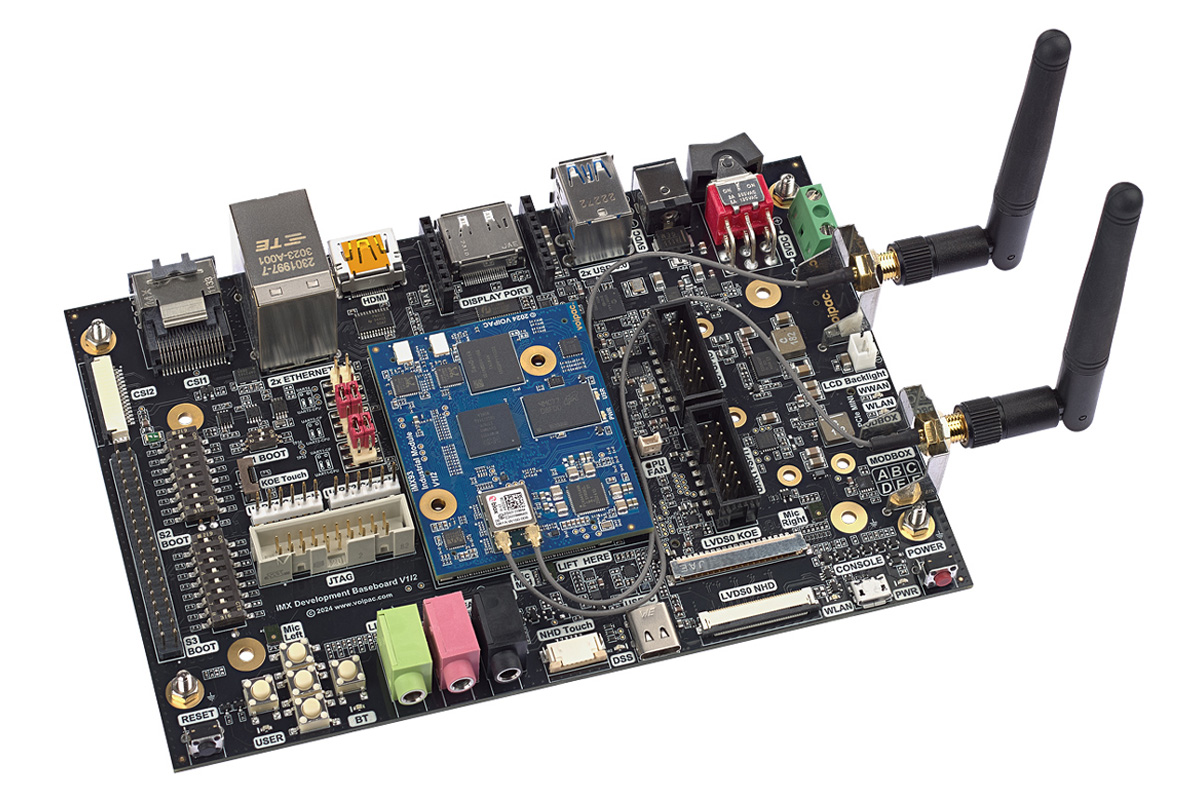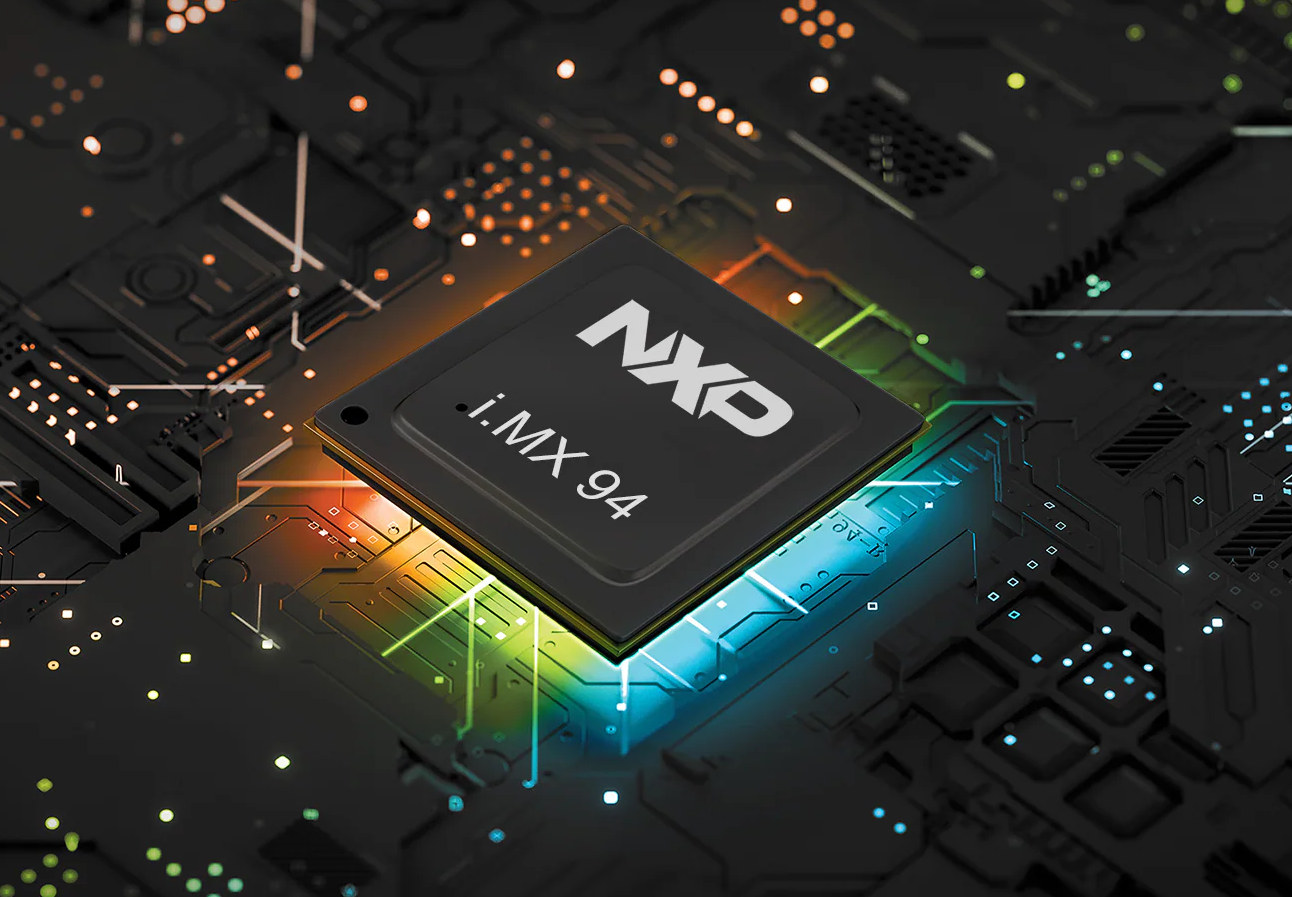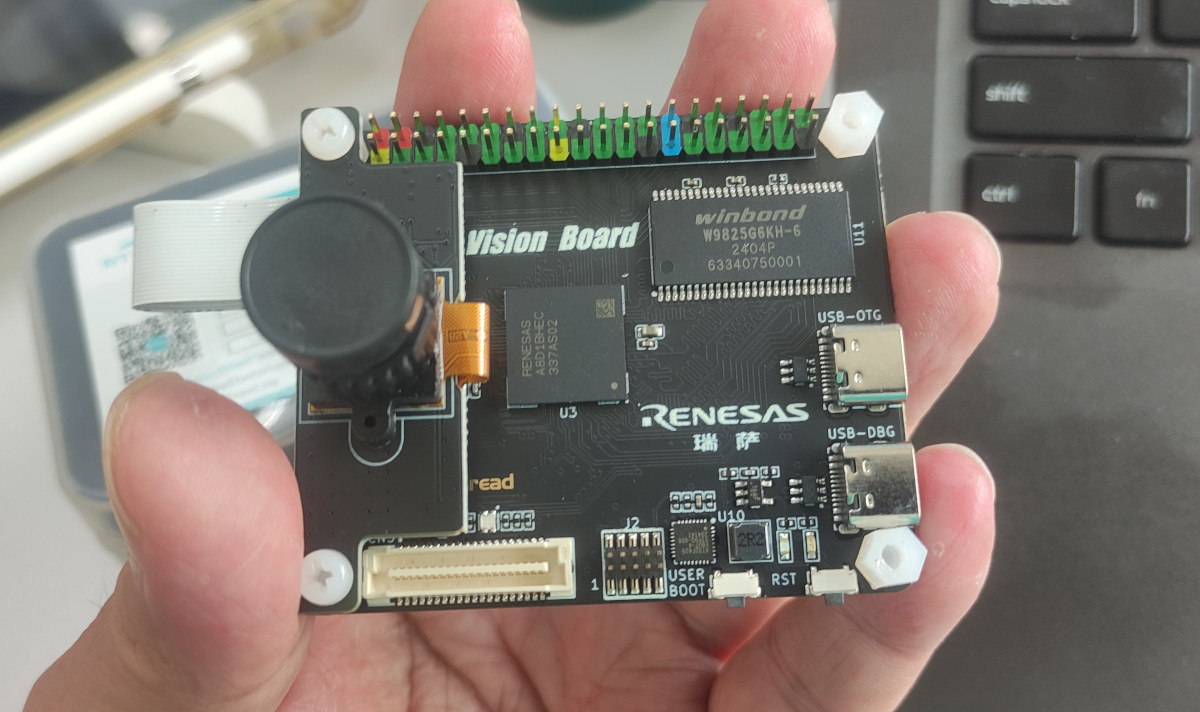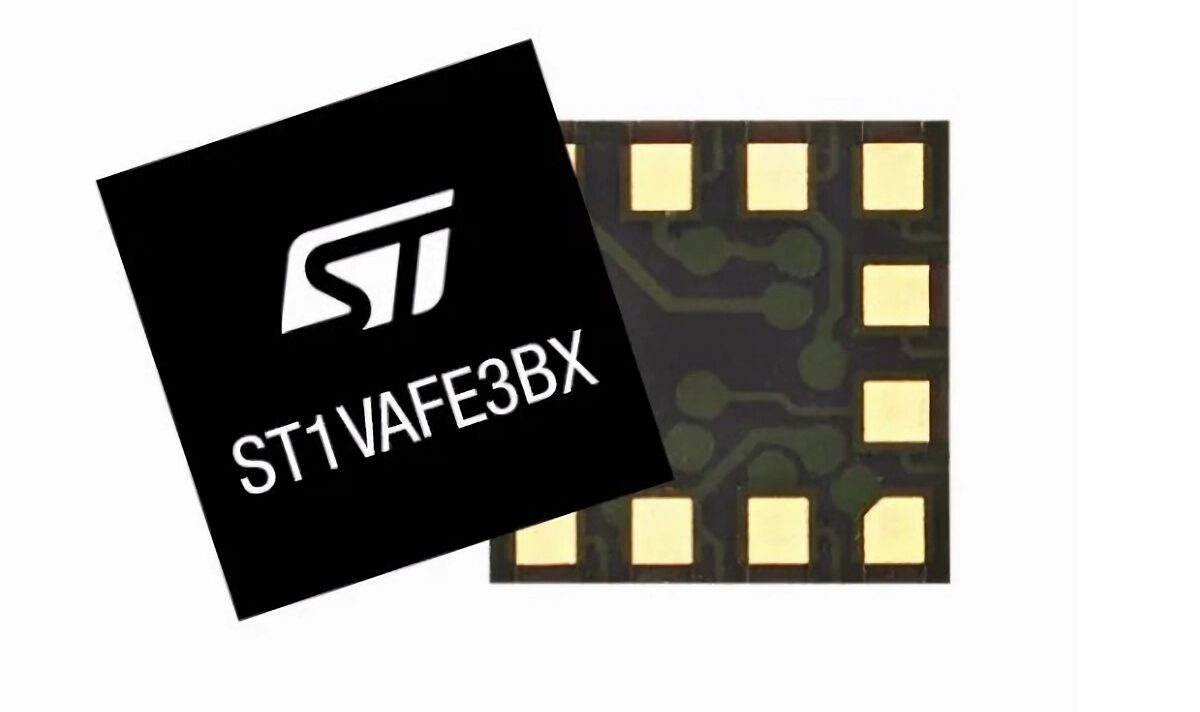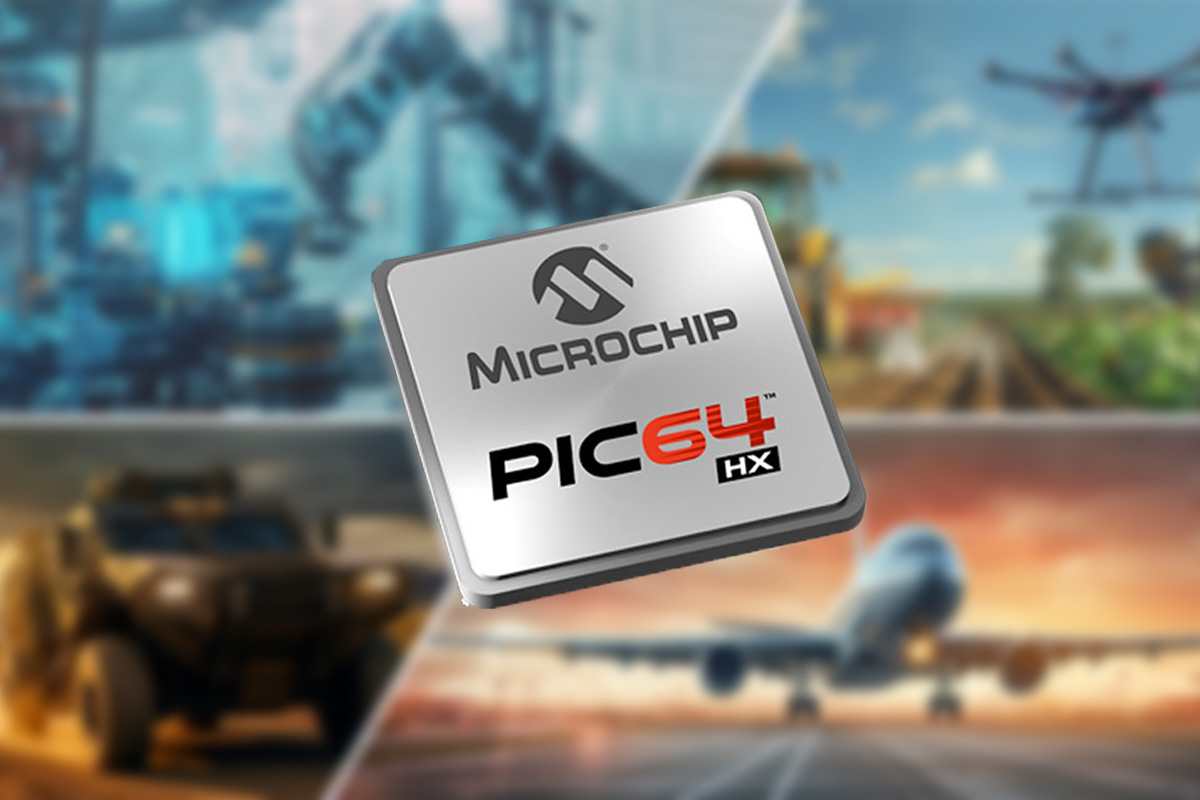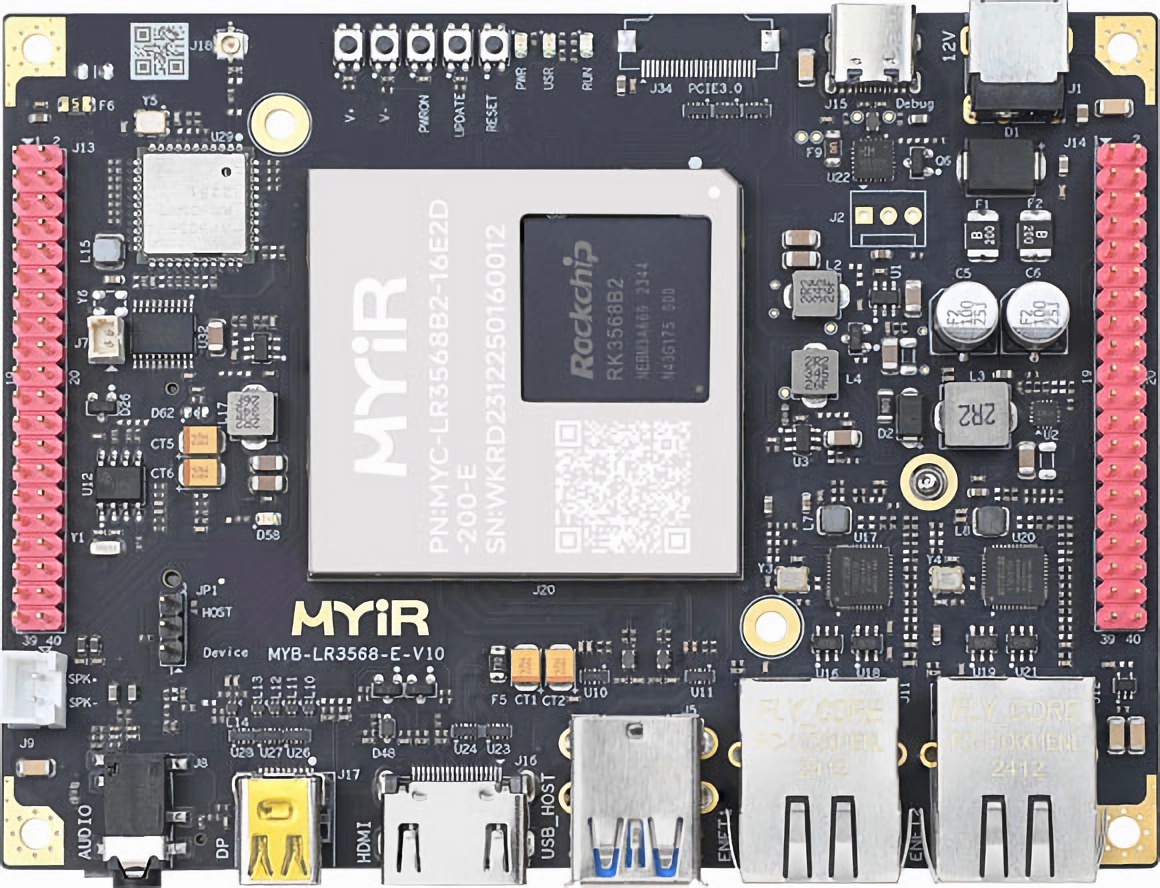VOIPAC Technologies has recently launched its iMX93 Industrial Development Kit (iMX93 module and iMX development baseboard) which comes in Max, Pro, Basic, and Lite configurations. The system-on-module (SoM) is built around the NXP i.MX93 SoC with dual-core Arm Cortex-A55 application processor running at up to 1.7GHz, a Cortex-M33 co-processor running at up to 250MHz, and an Arm Ethos-U65 microNPU with up to 0.5 TOPS of AI performance. Other features include DDR4 memory, eMMC Flash, and industrial-grade 100-pin shielded connectors for signal integrity and thermal performance. Additionally, the devkit also exposes CAN, PWM, ADC, etc.. signals and supports WiFi 6, Bluetooth 5.3, and dual GbE. These features make the VOIPAC iMX93 industrial development kit suitable for applications including AI, machine learning, human-machine interface (HMI) solutions, and more. iMX93 Industrial Development Kit specifications: System-on-Module (four options) iMX93 Industrial Module Max SoC – NXP i.MX 93 dual-core @ 1.7 GHz with real-time Cortex-M33 co-processor NPU […]
NXP i.MX 94 octa-core Cortex-A55/M33/M7 processor targets Edge AI industrial and automotive applications
NXP i.MX 94 is an octa-core Arm SoC with up to four Cortex-A55 application cores, two Arm Cortex-M33 real-time/functional safety cores, two Arm Cortex-M7 real-time/functional safety cores, and an NXP eIQ Neutron NPU designed for Edge AI industrial and automotive applications I initially thought it would be a cost-down version of the NXP i.MX 95, and while it shares many of the same features, it’s more an application-specific processor designed specifically for industrial and automotive applications, lacking a 3D GPU, camera input interfaces, a MIPI DSI display interface, and 10GbE networking, but increasing the number of real-time cores (at the cost of application cores) and adding several networking features such as an Ethernet time-sensitive networking (TSN) switch, 2.5GbE interface, an Ethercat controller, and support for industrial protocols like Profinet or OPC-UA FX. NXP i.MX 94 specifications: CPU Up to 4x Arm Cortex-A55 cores 2x Arm Corex-M7 cores, one for functional […]
Giveaway Week 2024 – RT-Thread Vision board with Renesas RA8D1 Arm Cortex-M85 MCU
It’s already Friday, and the fifty prize of CNX Software’s Giveaway Week 2024 will be the RT-Thread Vision board equipped with a Renesas RA8D1 Arm Cortex-M85 microcontroller, a camera, an optional LCD display, and a 40-pin GPIO header. The board is used as an evaluation platform for the Renesas RA8D1 MCU and RT-Thread real-time operating system. As its name implies, it’s mainly designed for computer vision applications leveraging the Helium MVE (M-Profile Vector Extension) for digital signal processing (DSP) and machine learning (ML) applications. I haven’t reviewed it myself and instead, received two samples from RT-Thread who sent them to me by mistake, so I’ll give them away here and on the Thai website. But it was reviewed by Supachai who tested the RT-Thread Vision board with OpenMV and ran a few benchmarks last June. The Helium MVE did not seem to be utilized in OpenMV at that time (June […]
STMicro’s low-power ST1VAFE3BX AI biosensor integrates biopotential signal monitoring and motion tracking
STMicroelectronics (STMicro) has announced the ST1VAFE3BX biosensor, a highly integrated chip that combines “cardio and neurological sensing with motion tracking and embedded AI functionalities,” and is targeted at healthcare and fitness wearables. The ST1VAFE3BX biosensor chip integrates biopotential inputs with an accelerometer and a machine learning core for reduced power consumption. It features a complete vertical analog front end (vAFE) for simplified detection of vital signs in electrocardiography, electroencephalography, and other healthcare monitoring applications. Inertial sensing by the accelerometer is synchronized with biopotential sensing “to infer any link between measured signals and physical activity.” The integrated machine-learning core (MLC) and finite state machine (FSM) allow for ultra-low-power and accurate biopotential input recognition at a degree of responsiveness that is reportedly faster than the current industry standard. The ST1VAFE3BX is aimed at applications in healthcare and fitness wearables such as smartwatches, smart patches, sports bands, connected rings, and smart glasses. It […]
Microchip PIC64HX1000 64-bit RISC-V AI MPU delivers post-quantum security for aerospace, defense, and automotive applications
Microchip recently unveiled the PIC64HX1000 64-bit RISC-V AI microprocessor (MPU) family designed for mission-critical intelligent edge applications in the aerospace, defense, industrial, and medical sectors thanks to a quantum-resistant design. These new MPUs feature eight SiFive’s Intelligence X280 cores, each clocked at 1 GHz. The MPUs are engineered with a decoupled vector pipeline enabling 512-bit operations enabling the PIC64HX1000 to achieve up to 2 TOPS for AI/ML processing and come equipped with integrated Time-Sensitive Networking (TSN) Ethernet connectivity. This new microprocessor includes a dedicated system controller for runtime monitoring and fault management, WorldGuard architecture for workload isolation, and post-quantum defense-grade cryptography, which includes the NIST-standardized FIPS 203 and FIPS 204 cryptographic algorithms, ensuring protection against future quantum computing threats. PIC64HX1000 64-bit AI MPU specification MPU variants PIC64HX1000 – IN (Industrial) PIC64HX1000 – AV (Aviation) PIC64HX1000 – MI (Military) CPU – 8x 64-bit RISC-V cores (SiFive X280), up to 1 GHz, […]
reCamera modular AI camera features SG2002 RISC-V AI SoC, supports interchangeable image sensors and baseboards
Seeed Studio’s reCamera AI camera is a modular RISC-V smart camera system for edge AI applications based on SOPHGO SG2002 SoC. The camera is made up of three boards: the Core board, the Sensor board, and the Baseboard. The Core board includes hosts the processor, storage, and optional Wi-Fi. The Sensor board consists of image choice of image sensors, and the Baseboard provides various connectivity options including USB Type-C, UART, microSD, and optional PoE port and CAN bus connectivity options. At the time of writing the company has released the C1_2002w and C1_2002 core boards. The C1_2002w core board includes eMMC storage, Wi-Fi, and BLE modules, and the C1_2002 features extra SDIO and UART connectivity, but not WiFi. Both boards use the SOPHGO SG2002 tri-core processor and can be paired with various camera sensors for applications such as robotics, healthcare, smart home, as well as buildings and industrial automation. […]
Lattice MachXO5D-NX FPGA family enables Hardware Security in Programmable FPGAs
Lattice Semiconductor has recently introduced the MachXO5D-NX FPGA family, which integrates a hardware root of trust (RoT) into low-power FPGAs. This addresses security challenges by combining on-chip Flash memory and hardware encryption to minimize code capture risks during load time. The MachXO5D-NX family includes three variants with logic cell counts of 27k (FMXO5-25), 53k (LFMXO5-55T), and 96k (LFMXO5-100T). These FPGAs feature built-in hardware encryption, a cryptographic engine supporting AES-256, ECDSA-384/521, SHA2-256/384/512, and RSA 3072/4096, and a unique secret identity (USID) for device identity protection. Built on a 28-nm fully-depleted silicon-on-insulator (FD-SOI) process, these FPGAs reduce power consumption by 75% and lower soft error rates by 100x(as the company mentions). They support interfaces such as MIPI D-PHY (CSI-2, DSI), LVDS, Gigabit Ethernet, and PCIe, making them suitable for secure edge applications. Lattice MachXO5D-NX FPGA family specifications FPGA – Lattice Semi MachXO5D-NX FPGA family (27k (FMXO5-25), 53k (LFMXO5-55T), and 96k (LFMXO5-100T)) Programmable […]
RK3568-based MYC-LR3568 system-on-module comes with up to 8GB RAM, 32GB storage for cost-sensitive Edge AI applications
MYIR Tech has announced the release of the Rockchip RK3568-based MYC-LR3568 Edge AI system-on-module (SoM) offered in a compact 381-pin expansion LGA package design. It features up to 8GB LPDDR4 RAM, 32GB eMMC flash storage, a power management integrated circuit, and various connectivity options. The base configuration of the MYC-LR3568 system-on-module offers only 2GB RAM and 16GB storage but the module supports up to 8GB RAM and 32GB eMMC storage. It supports several video codecs, including 4K 60fps H.265/H.264/VP9 decoding and 1080P 60fps H.265/H.264 encoding, for high-quality video playback and recording. The MYC-LR3568 SoM works with Debian and Linux operating systems. It is designed for cost-sensitive industrial applications including but not limited to IoT gateways, NVR storage, industrial control, human-machine interface (HMI), cloud terminals, and facial recognition systems. MYIR Tech’s MYC-LR3568 specifications: SoC – Rockchip RK3568 (B2 or J variant) CPU RK3568B2 – Quad-core processor with four Cortex-A55 cores @ 2.0 […]


